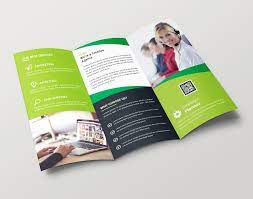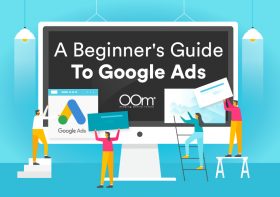Effective Marketing With Brochures

Brochures can be highly effective marketing materials-when done right. They offer a great way to supply information, whether it’s to advertise or market, educate or inform, or entertain. They provide information people need, but are generally short enough that they remain easy to read. The following five steps will help you create an effective brochure that will get the results you’re looking for.
Step 1: Identify the Brochure’s Purpose
Ask yourself what the goal of the brochure is. What do you want the brochure to accomplish? What next steps do you want the reader to take? Brochures can be used to advertise or market, educate or inform, or entertain-which of these do you want your brochure to do? Clearly identifying the purpose and communicating it to everyone involved in the project will help ensure the brochure becomes an effective one.
Step 2: Identify the Audience
How the brochure will be used ties directly with who the audience for the brochure is. Are they technical or nontechnical? What is their level of education? Are they already knowledgeable about the topic, or is the brochure an introduction to it? Write down everything you know about them-their demographics such as how old they are, where they live, what their occupations are, etc. All of these components will factor into the types of language you use as you write the copy, and the design choices you will make.
Step 3: Craft the Message
Once you understand the purpose of the brochure, and who the brochure’s audience is, you’re nearly ready to craft the message. Before you start writing, however, think about what the audience needs or wants to know. What types of information will support the purpose of the brochure? Is what you’re writing relevant to their wants and needs? Also consider the tone of the piece-is it upbeat, or serious? Carefully analyze your word choice. Are the types of words you’ve chosen appropriate for your audience’s education level and technical understanding? It’s also important to consider length. You want the copy to provide enough information to get the audience interested in learning more-but in most cases, you won’t communicate everything through the brochure. Finally, make sure you include a strong call to action in your brochure-again, think back to the purpose you identified and then provide a succinct call to action that will make it easy for the reader to take the next step.
Step 4: Design the Brochure
There are many choices to be made with regard to the design of the brochure, starting with size. How large or small does the brochure need to be to accommodate your copy and images? How much white space do you want to have? How many panels will the brochure have? If the brochure is going to have a unique design, it may require die cuts or unusual folding when its being printed-but this can be an excellent way to make your brochure stand out. Depending on the purpose of the brochure, you may want to include a business reply card that the reader can fill out and mail in to redeem a special offer or receive additional information. If the brochure is going to be a direct mail piece, be sure to check the US Postal Service’s regulations on size to identify what the mailing costs will be. When choosing colors and imagery, think back to the purpose of the brochure, and its audience, and take those factors into consideration. Read the copy and make design choices that support it. Consider developing two or three different concepts to help you find one that feels right.
Step 5: Print and Distribute the Brochure
Finally, you’re ready to print the brochure. Be sure to choose a printer that can accommodate your specifications, quantity, and budget. Choose a printer that has a good reputation-you don’t want to deal with the lost time and additional cost it takes to reprint a badly printed brochure. Before sending your file to the printer, make sure to proofread the brochure carefully, and have a “second pair of eyes” review the design. Once you’re sure everything is ready to go, send the file to the printer-but make sure you check with them so you know what file format they prefer to receive.




Leave a Reply